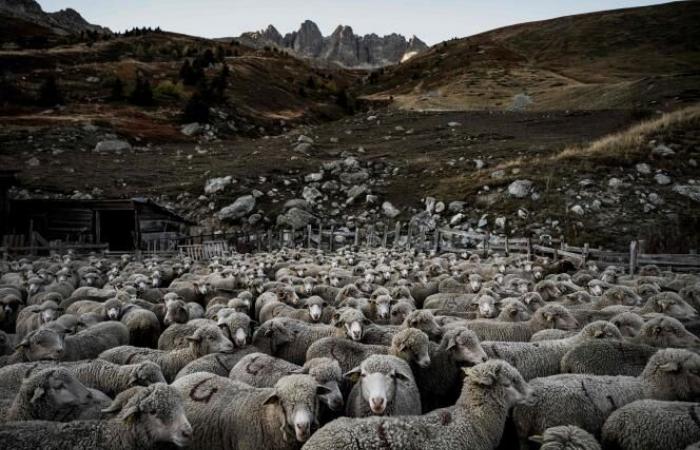On Friday, August 30, Marc Fesneau, the resigning Minister of Agriculture, finally decided to go to Saône-et-Loire, more precisely to the town of Flagy, to the farm of Julien Fuet, a sheep and goat farmer. A field trip, organized urgently, while bluetongue (BT) is raging in France and has now reached this department.
Read also | Article reserved for our subscribers Farmers concerned about new wave of bluetongue
Add to your selections
A new serotype of this disease, also known as “blue tongue”, serotype 3, made its first appearance on the national territory on Monday, August 5 in the North, on the border with Belgium. Three days later, the number of affected outbreaks rose to 3, then to 63 on Friday, August 16, before reaching 190 a week later. And on Friday, August 30, the number of outbreaks recorded jumped to 342 in thirteen departments, reaching those of Orne, Saône-et-Loire and Somme. The variant of this disease spread by biting insects, the culicoides, therefore appears to be very contagious. First appearing in the Netherlands in September 2023, it then spread to Belgium, before reaching France. It affects cattle but especially sheep, resulting in mortality in herds, but also in fertility problems, abortion and reduced production.
Tense financial situation
The number of animals that have died as a result of contamination with serotype 3 FCO has not yet been released by the ministry. “In some affected sheep flocks, mortality can increase very quickly, reaching 30% or even 50%.”says Patrick Bénézit, president of the National Bovine Federation.
Faced with this new health risk, the government launched a free vaccination campaign on August 12, at an estimated cost of 10 million euros. With coverage limited, however, to farmers present in the area affected by the disease. Following the example of Christophe Van Hoorne, a sheep farmer in the Marne and national secretary of the Confédération paysanne. “On Monday the vaccination was open and on Thursday I vaccinated my animals”he explains. A decision that does not remove all uncertainties: “It takes three weeks for the vaccine to take effect. I monitor my flock morning and evening and examine the heads of the sheep, because there was a case in the Aisne near my homehe says. I can’t afford to lose animals.”
The financial situation of sheep farmers is, in fact, tense. Fears are therefore strong among their ranks. And the question arises as to whether the number of vaccines ordered by the State will be sufficient while the affected area is growing very quickly and now represents almost two thirds of the territory.
You have 36.68% of this article left to read. The rest is reserved for subscribers.






